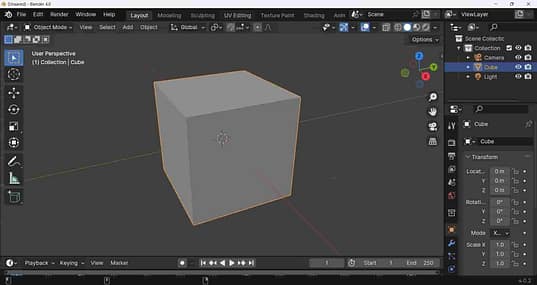In the world of 3D modeling, precision, and effective communication are key factors that can make or break a project. To ensure accurate and streamlined collaboration among artists, designers, and animators, Blender offers a powerful tool called Annotations. This feature allows users to make notes and drawings directly on the 3D viewport. It helps to convey ideas, provide feedback, and improve the overall workflow. The annotations tool in Blender provides a set of intuitive drawing and editing options, empowering users to mark up their 3D scenes with sketches, diagrams, and written comments. Whether you are working on a complex architectural project, animation, or object modeling, this tool proves to be invaluable in visualizing concepts, refining details, and communicating ideas effectively. The Annotations tool offers a range of brush types, including pencil, pen, and highlighter, each with adjustable settings for size, opacity, and color. This flexibility allows users to create various drawing styles and effects, enhancing the clarity and visual appeal of their annotations. Additionally, Blender provides unique brush textures, giving artists the ability to mimic different materials or create custom styles to suit the project's requirements. To facilitate precise annotations, Blender offers a variety of snapping options. Users can align their drawings to specific points on models, surfaces, or objects, ensuring accuracy and assisting in making measurements. With these snapping features, annotations become more than mere sketches, transforming into informative overlays that provide critical information for the modeling process. what it supports: Furthermore, the Annotations tool in Blender supports layers, enabling users to organize and manage different annotation elements effectively. By separating drawings and comments into separate layers, artists can easily toggle their visibility as needed, avoiding clutter and maintaining a clean workspace. This feature also allows for quick edits and adjustments without impacting the rest of the annotations or the underlying 3D scene. One of the most advantageous aspects of Annotations in Blender is its seamless integration with other collaboration tools. Annotations can be easily saved as images or animations, making them readily shareable with team members or clients for review and feedback. This ability to export annotations as standard image formats ensures compatibility across different platforms, facilitating efficient communication and expediting the iteration process. In conclusion, the Annotations tool in Blender serves as an indispensable asset for professionals working in 3D modeling. By providing a straightforward and versatile platform to sketch, comment, and annotate directly on 3D scenes, Blender enhances precision, communication, and collaboration. With a wide array of brush options, snapping capabilities, layer management, and export features, this tool allows artists to convey their ideas more effectively, resulting in better workflow efficiency and ultimately superior 3D projects.

